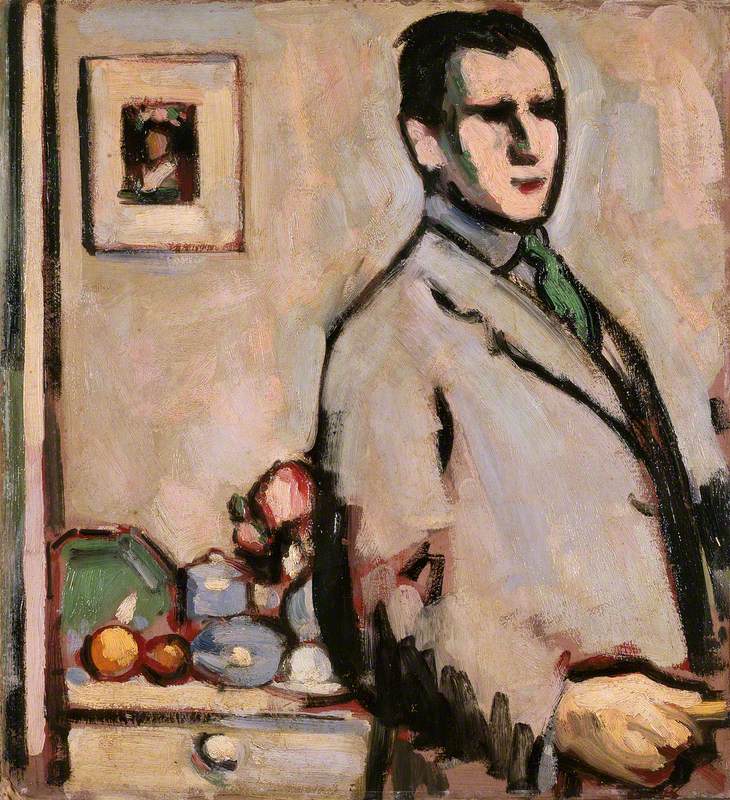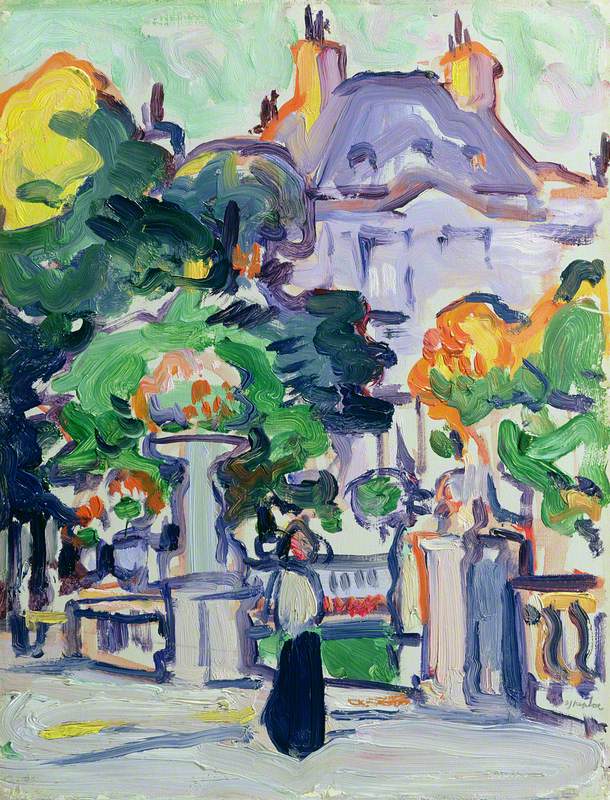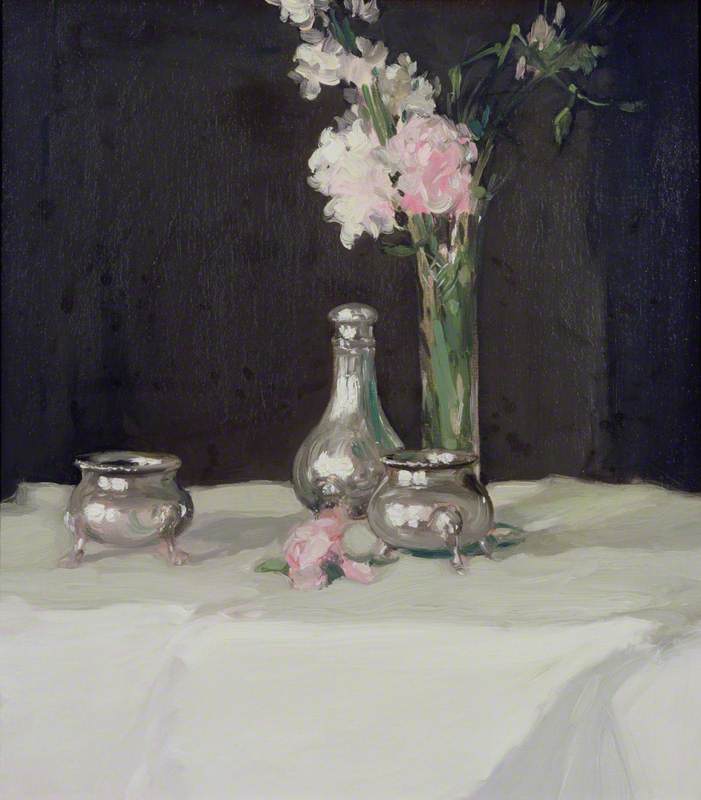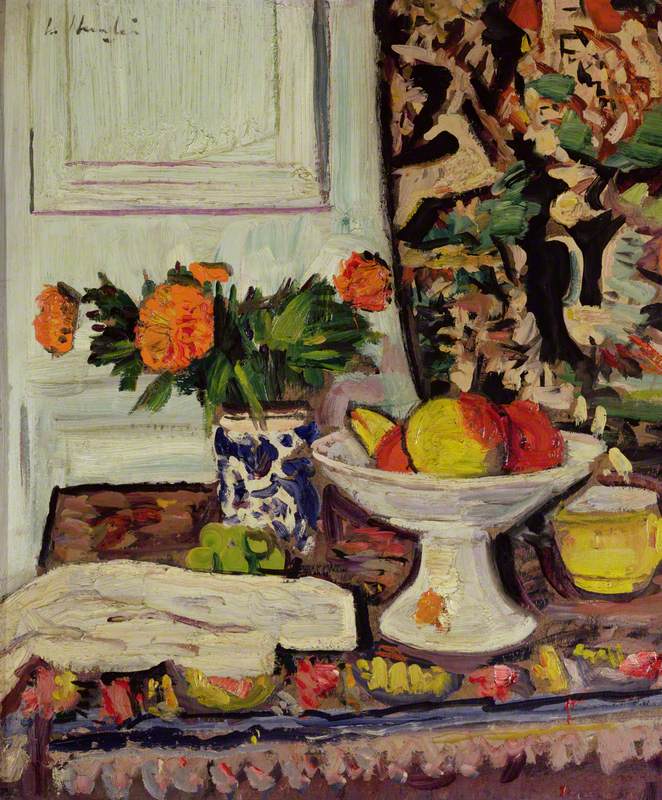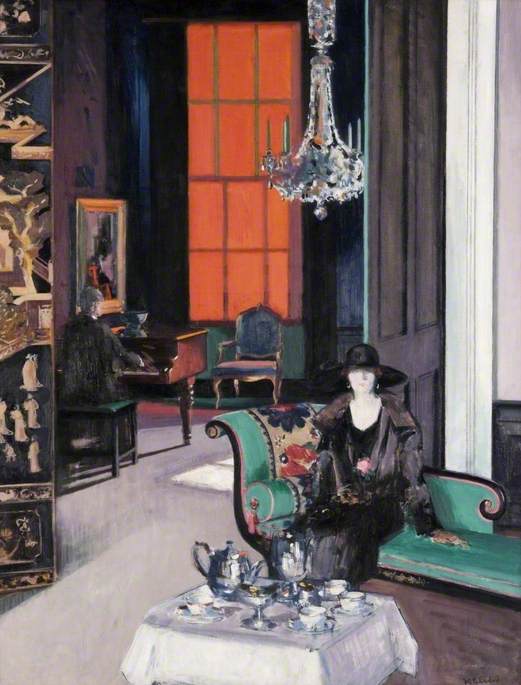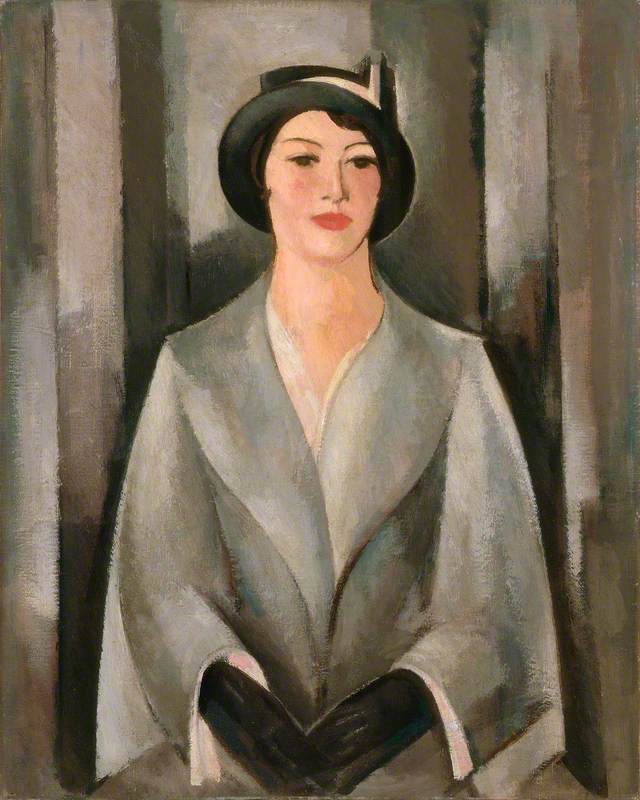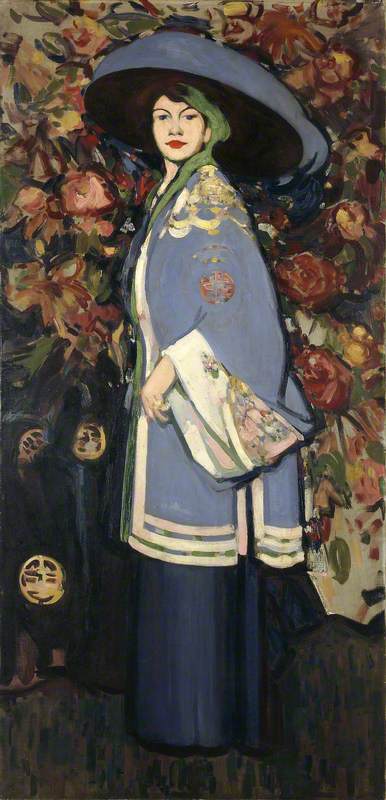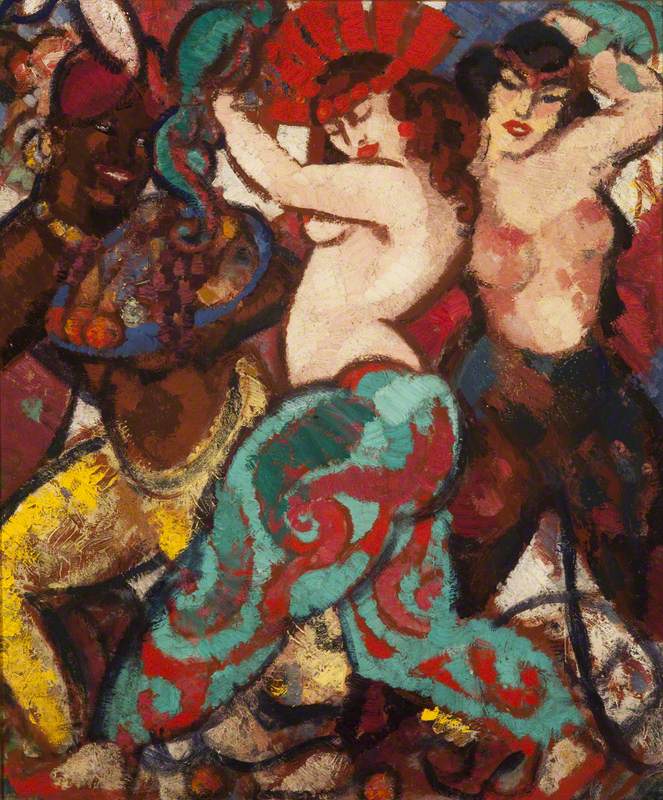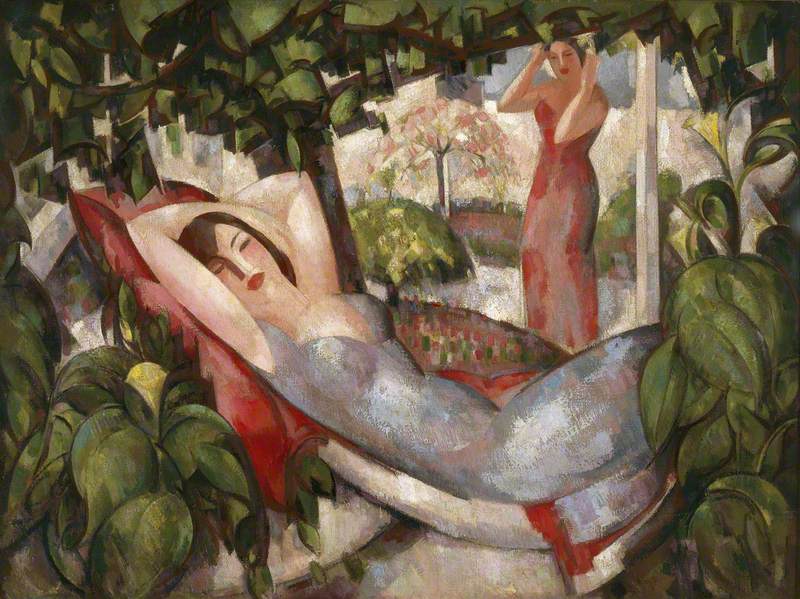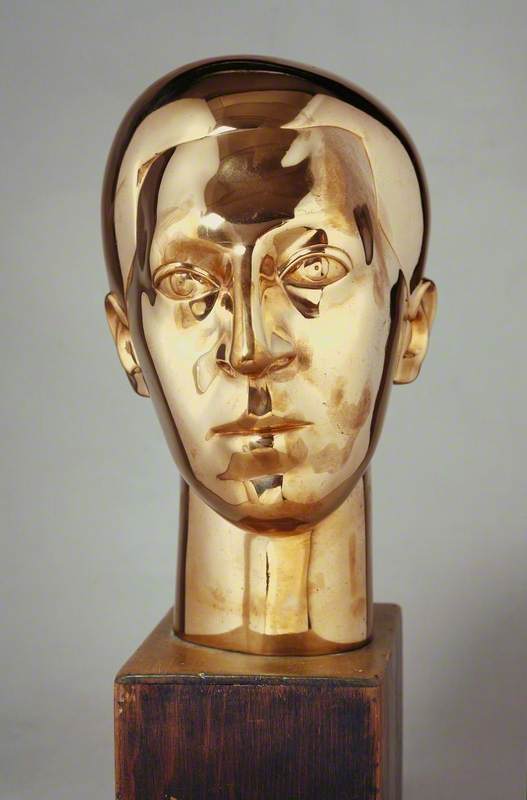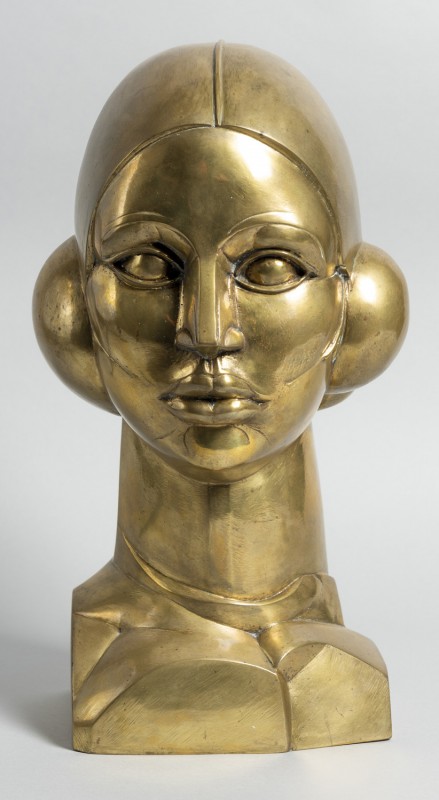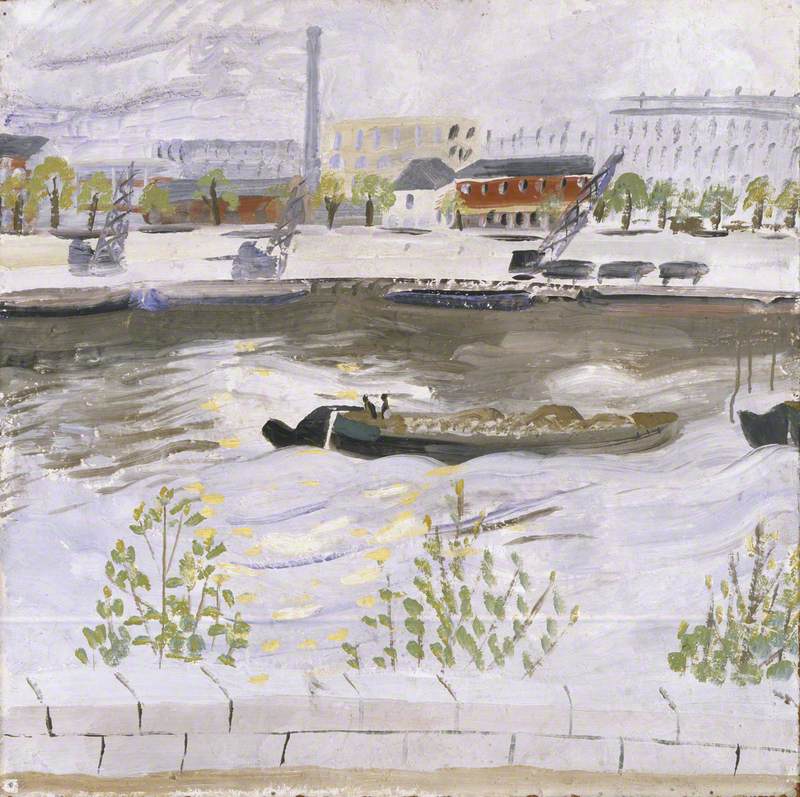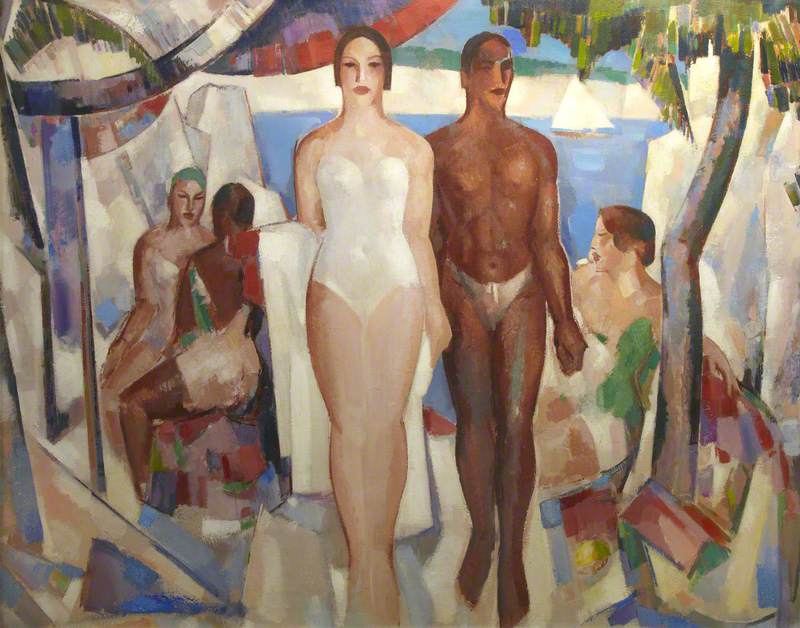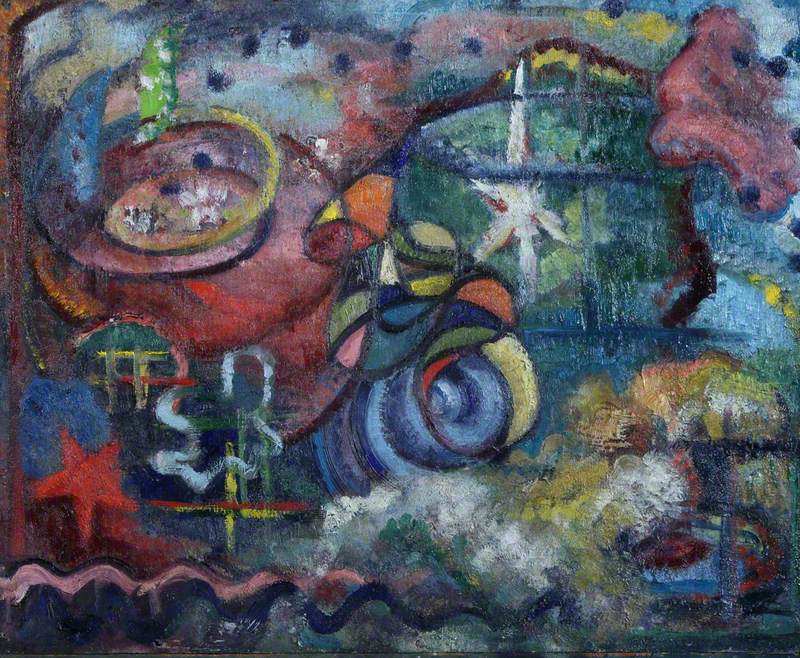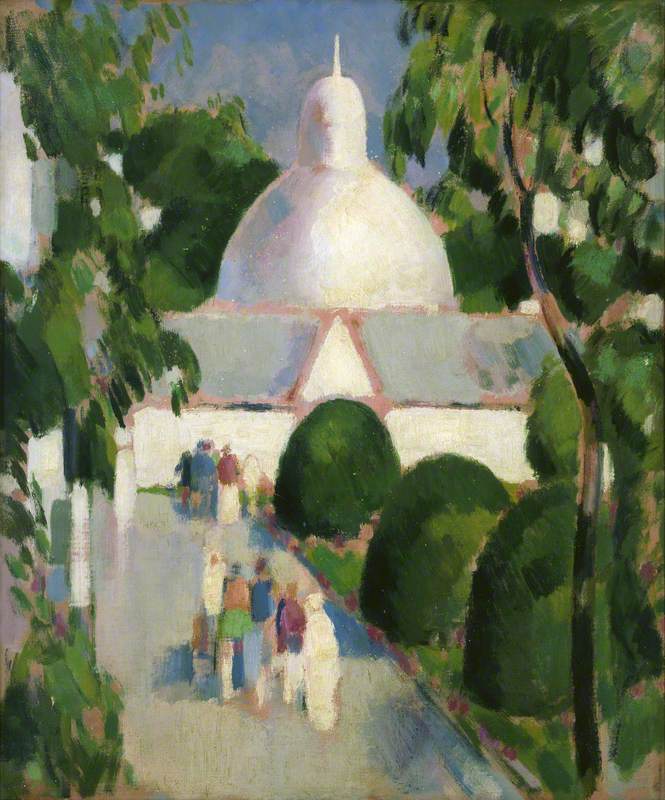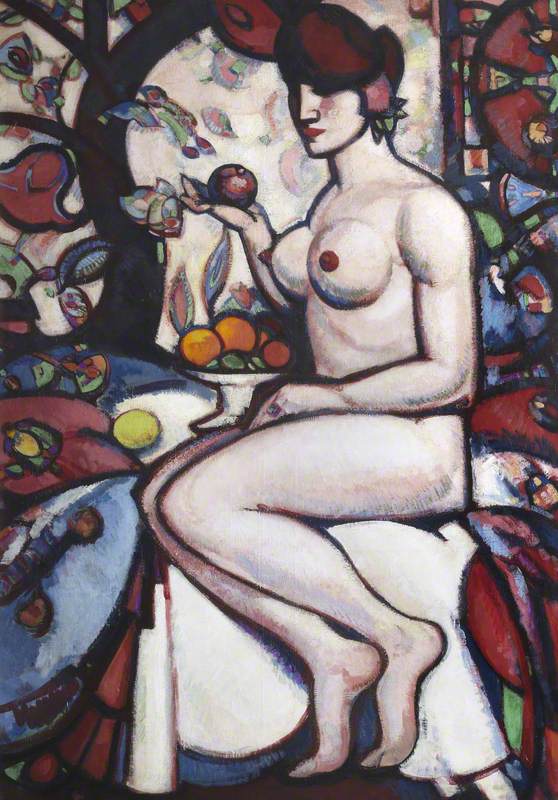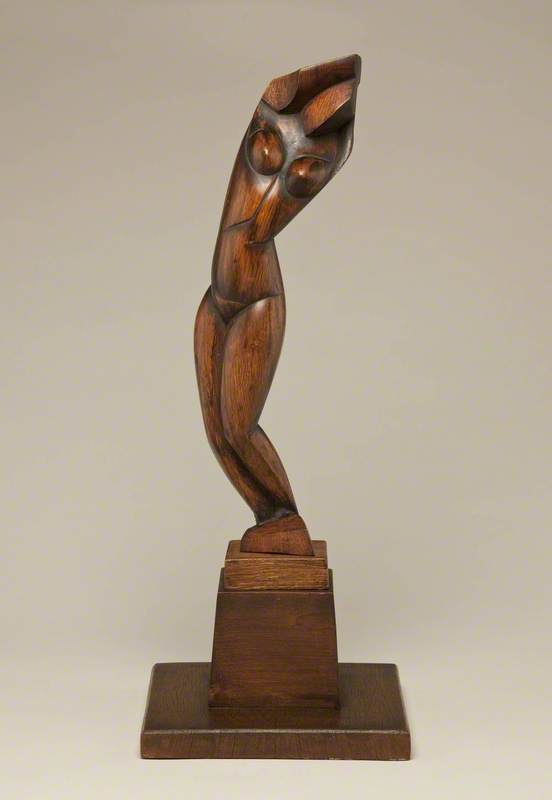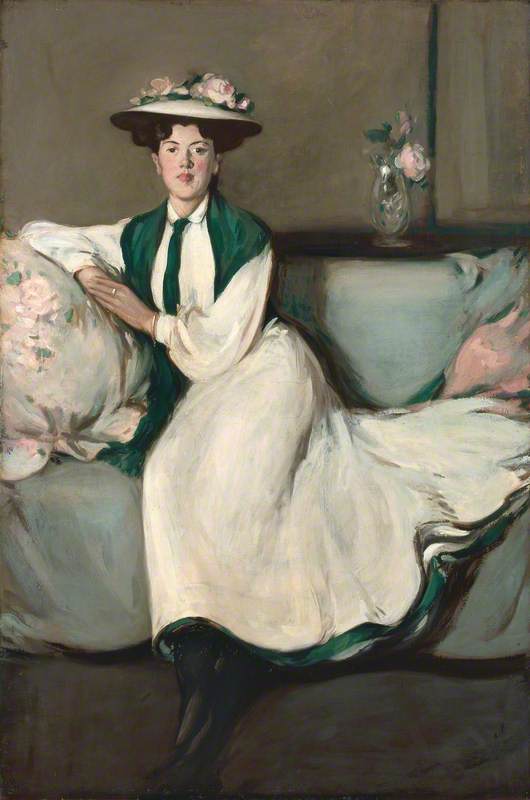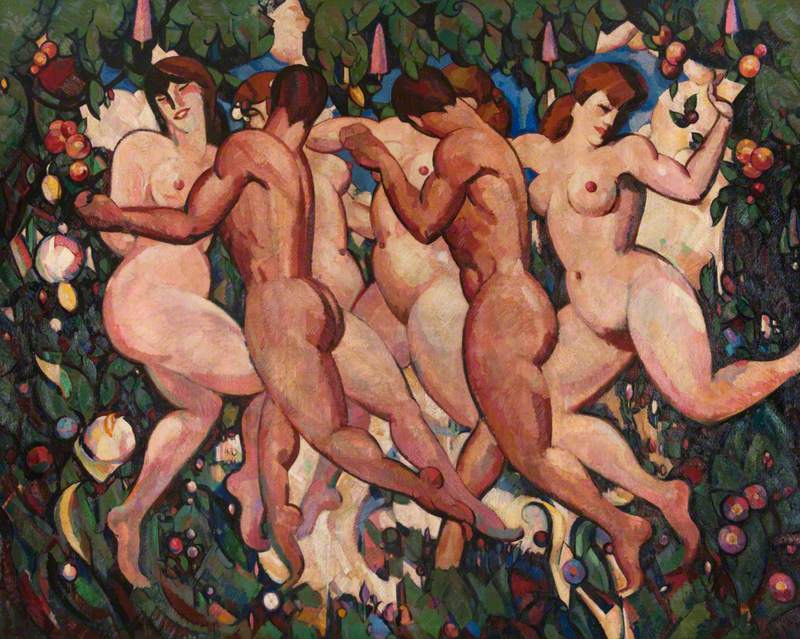2024 marks the 150th anniversary of the birth of John Duncan Fergusson. He is best known as one of the four ‘Scottish Colourists’, along with FCB Cadell, SJ Peploe and GL Hunter. However, Fergusson has the most international reputation of the group and was involved in the art worlds of Paris, London and Glasgow during a career that spanned some 60 years.
2024 also sees major changes in the presentation of the most important collection of Fergusson’s work, alongside that of his wife, the dance pioneer Margaret Morris, at the re-developed Perth Art Gallery. This will allow for a new evaluation of their collaborative relationship, not least his teaching and drawing of the pupils at her renowned Summer Schools.
-
John Duncan Fergusson
Self Portrait 1907John Duncan Fergusson was born in Leith, near Edinburgh, in 1874. His unorthodox training was undertaken during the 1890s, mainly in Paris, and included sporadic attendance at the Académies Colarossi and Julian. His first solo exhibition was held at the Baillie Gallery in London in 1905 and two years later he moved to the French capital; he painted Self Portrait shortly afterwards. The following six years, spent immersed in the birth of modern European art, provide the foundation of Fergusson's international reputation.
John Duncan Fergusson (1874–1961)
Oil on canvas
H 54 x W 51 cm
Perth & Kinross Council
-
Samuel John Peploe
Luxembourg Gardens c.1910Of the other Scottish Colourists, Fergusson first met Peploe, in Edinburgh around 1900. Fergusson later declared of their relationship that 'it was, I think, one of the best friendships that has ever been between two painters.' They began to spend the summers painting together in France in 1904. Fergusson persuaded Peploe to move to Paris in 1910, where he lived for two years and it was during this period that Peploe painted Luxembourg Gardens. Fergusson welcomed him into his circle of Anglo-American artist friends and both were elected 'sociétaires' of the progressive Salon d'Automne.
Samuel John Peploe (1871–1935)
Oil on wood panel
H 35.6 x W 27.9 cm
The Fleming Collection
-
Jonquils and Silver
Jonquils and Silver 1905Early in their careers, Fergusson and Peploe shared an admiration for the French nineteenth-century artist Édouard Manet, as can be seen in the elegant and painterly Jonquils and Silver. A sophisticated lifestyle is suggested by the Adam Revival-style silver salts and pepper pot, whilst jonquils represent 'a token of desire' in the language of flowers.
John Duncan Fergusson (1874–1961)
Oil on canvas
H 50.8 x W 45.7 cm
The Fleming Collection
-
George Leslie Hunter
Peonies in a Chinese Vase c.1928Hunter moved from San Francisco to Glasgow in 1906 and is believed to have met Fergusson in Paris that year. He described Fergusson as 'a most likeable chap, determined yet sympathetic' and they stayed in touch despite Hunter's nomadic lifestyle. During the 1920s, with Peploe, they had solo exhibitions at La Société des Beaux-Arts in Glasgow (later Alex. Reid & Lefèvre), planned ways in which to champion modern European art in Scotland and spent time working in the south of France, attracted by its climate, light and lifestyle of the south of France. Peonies in a Chinese Vase is a bravura example of Hunter's still lifes of the period, for which he is perhaps best known.
George Leslie Hunter (1877–1931)
Oil on board
H 61 x W 50.8 cm
The Fleming Collection
-
Christmas Time in the South of France
Christmas Time in the South of France 1922In 1913, Fergusson left Paris in search of more sun, more colour' and settled in the Cap d'Antibes. He was to return to the area on a regular basis until 1960, the year before he died. In 1922 he spent Christmas with his patron George Davison, at the latter's Villa Gotte in Juan-les-Pins. Christmas dinner was eaten on the terrace under blazing sunshine and Fergusson recorded this blissful visit in Christmas Time in the South of France.
John Duncan Fergusson (1874–1961)
Oil on canvas
H 61 x W 55.8 cm
Perth & Kinross Council
-
Interior: The Orange Blind
Interior: The Orange Blind c.1927Cadell was the youngest of the Scottish Colourists and is thought to have been introduced to Fergusson by their mutual friend Peploe before 1910. However, in 1936 Cadell told his patron, the ship-owner Ion Harrison, that he had not seen Fergusson since 1909. Indeed, Fergusson only exhibited with the other Colourists on three occasions whilst they were all alive, in Paris in 1924 and 1931, and in London in 1925. Furthermore, the term ‘Scottish Colourists’ was not coined and applied to them exclusively, until an exhibition mounted by T R Annan & Sons Ltd in Glasgow in 1948. Cadell's renowned portrayals of Edinburgh's Georgian New Town and its civilised residents is epitomised by Interior: The Orange Blind.
Francis Campbell Boileau Cadell (1883–1937)
Oil on canvas
H 111.8 x W 86.4 cm
Glasgow Life Museums
-
Souvenir de Jumièges
Souvenir de Jumièges 1931The flattened, decorative forms, vivid colour, suppressed shadows and geometric structure of Cadell's work of the early 1920s related to the 'Art Deco' movement, before the name was even coined in response to the Exposition international des arts décoratifs et industriels modernes held in Paris in 1925. Fergusson was also drawn to the style, mainly by way of contemporary women's fashion, a recurring theme in his practice, as seen in Souvenir de Jumièges.
John Duncan Fergusson (1874–1961)
Oil on canvas
H 92 x W 74 cm
Perth & Kinross Council
-
Anne Estelle Rice
Côte d'Azur c.1915Fergusson met the American artist Anne Estelle Rice whilst painting in Paris-Plage with Peploe during the summer of 1907. This contributed to his decision to move to Paris, where she had been living for two years, working as a fashion illustrator. They became central figures in the 'Rhythmist' group of artists, also including Jo Davidson, Jessica Dismorr and Marguerite Thompson, many of whom contributed to the cutting-edge journal 'Rhythm' of which Fergusson was founding Art Editor in 1911; a group exhibition of their work was held at the Stafford Gallery in London in 1912. Côte d'Azur is one of just a handful of paintings by Rice in UK public collections.
Anne Estelle Rice (1877–1959)
Oil on panel
H 30 x W 40 cm
Perth & Kinross Council
-
Le manteau chinois (Anne Estelle Rice, 1877–1959, Artist)
Le manteau chinois (Anne Estelle Rice, 1877–1959, Artist) 1909Fergusson glorified Rice's beauty, confidence and indepedence in ambitious works such as Le manteau chinois. Her over-sized hat and kimono-style jacket stand out in contrast to the highly-coloured and intricate floral background. This painting reveals Fergusson’s expert evaluation of recent works by the Fauve artists, including Henri Matisse, who depicted his wife wearing Japanese clothing in 1905. It was shown at the Salon d'Automne in 1909.
John Duncan Fergusson (1874–1961)
Oil on canvas
H 199.5 x W 97 cm
Perth & Kinross Council
-
Margaret Morris
Harem Dancers 1920Morris introduced herself to Fergusson at his studio in Paris in 1913. She was in the city with her dance troupe and their personal and professional lives were thereafter interwoven. Morris, Margaret Morris Movement (the technique of her devising), her teachers and pupils, whether in motion or sitting more formally for Fergusson, provided endless inspiration for his work, including in three dimensions. In his turn, Fergusson taught them drawing and painting, as well as theatre set and costume design. Harem Dancers reveals Morris's own talents at painting in oils, with a brightness of colour, simplification and outlining of form and sense of rhythm encouraged by Fergusson.
Margaret Morris (1891–1980)
Oil on board
H 60 x W 50 cm
Perth & Kinross Council
-
Summer, 1914 (Margaret Morris, 1891–1980)
Summer, 1914 (Margaret Morris, 1891–1980) 1934Morris spent the summer of 1914 with Fergusson in the Cap d'Antibes. She later recalled 'the wonder of...[that]...summer passed all description. Fergus had everything orgnised, a good supply of charcoal for slow cooking, omelettes and soups. He had hung a hammock in the fig tree, so one could lie in it and pull the ripe figs - sometimes the early ones dropped on one!' Fergusson recalled this idyllic period twenty years later in Summer 1914 of 1934.
John Duncan Fergusson (1874–1961)
Oil on canvas
H 88 x W 113.5 cm
Perth & Kinross Council
-
Wyndham Lewis
Workshop c.1914–5World War One began whilst Fergusson and Morris were in Cap d'Antibes. Morris returned to London where she had a dance school and theatre in Chelsea and Fergusson joined her there soon afterwards. He encouraged her to establish the Margaret Morris Club, emulating the heady creative mix of Parisian cafés. The Club became a gathering place for members of London's avant-garde scene, including the leader of the Vorticist group, Wyndham Lewis. Their influence can be felt in the paintings Fergusson made based on sketches drawn in Portsmouth docks in 1918.
Wyndham Lewis (1882–1957)
Oil on canvas
H 76.5 x W 61 cm
Tate
-
Dockyard, Portsmouth
Dockyard, Portsmouth 1918In July 1918 Fergusson was granted permission by the Admiralty ‘to go to Portsmouth to gather impressions for painting a picture’. Once back in London, Fergusson created a series of paintings, including Dockyard, Portsmouth, which are as distinct in style as they are in subject matter within his oeuvre, as he experimented with a personal interpretation of Vorticism. The completion of the paintings coincided with the end of the conflict and none were acquired for official purposes until 1975.
John Duncan Fergusson (1874–1961)
Oil on canvas
H 77 x W 68.8 cm
IWM (Imperial War Museums)
-
Frank Dobson
Sir Osbert Sitwell (1892–1969), Bt 1923Fergusson is the only Scottish Colourist to have worked in three dimensions and he made sculpture for over 45 years, from 1908 to about 1955.The years circa 1918 to 1922 mark the peak of his activity in this field, which is linked with a parallel development in Margaret Morris Movement. His approach to sculpture owes much to artists active in Paris before World War One, such as Constantin Brancusi and Alexander Archipenko. However, British sculptors whom he met through the Margaret Morris Club, including Frank Dobson and Maurice Lambert, and their use of materials and approach to form, provided Fergusson with new directions to pursue. Frank Dobson's bust of Sir Osbert Sitwell has been cited as a specific source of inspiration.
Frank Dobson (1886–1963)
Bronze
H 31.8 x W 17.8 x D 22.9 cm
Tate
-
Eástre (Hymn to the Sun)
Eástre 1924Eástre (Hymn to the Sun) of 1924 is Fergusson's best known sculpture, partly because two posthumous editions of it have been cast, from which examples are held in several public collections. Fergusson made it in plaster, but
kept it under his bed for three years before he could afford to have it cast in brass. Eástre is the Saxon
goddess of Spring and of the rising sun. The sculpture is a tribute to the life-giving power of the sun and
is almost certainly a portrait of Margaret Morris; she devised a ballet of the same title which took its inspiration from the music of Rimsky-Korsakov. Reflective brass was favoured by other contemporary sculptors to signify modernity, not least by Dobson as seen above.
John Duncan Fergusson (1874–1961)
Brass
H 42 x W 23.5 x D 26 cm
Leicester Museums and Galleries
-
Winifred Nicholson
Quai d'Auteil 1932–1933During the 1920s, Fergusson's work was shown in solo and group exhibitions in Edinburgh, Glasgow, London and Paris, whilst three solo shows were staged in America. After fifteen years spent living in the English capital, he returned to Paris in 1929. Ever the sociable, pro-active artist, Fergusson became President of Le Groupe d'Artistes Anglo-Américain. He showed his work alongside his English contemporaries, including Winifred Nicholson, John Piper and Victor Pasmore. Nicholson's Quai d'Auteil shows the view from her second-floor flat in Paris, across the Seine towards a Citröen factory on the opposite bank, to where she moved with her three children in 1932.
Winifred Nicholson (1893–1981)
Oil on board
H 80 x W 80 cm
Amgueddfa Cymru – National Museum Wales
-
Bathers: Noon
Bathers: Noon 1937Margaret Morris held her first Summer School in Antibes in 1923 and staged it there regularly until the late 1950s. Her pupils would dance barefoot in the pine forests and on the beaches, followed by sea- and sunbathing. Bathers: Noon is a double portrait of Fergusson and Morris depicting the active, outdoor lifestyle they embraced during these extended stays in the south of France. It reveals their love of the warm climate, the beauty of their surroundings and their enjoyment of their companions.
John Duncan Fergusson (1874–1961)
Oil on canvas
H 115.3 x W 146.4 cm
University of Stirling
-
New Art Club Meeting
New Art Club Meeting 1944Fergusson and Morris were in Antibes when World War Two was declared.They settled in Glasgow, where Morris's most successful and sole surviving dance school was based and which Fergusson considered to be the most Celtic city, as the importance of his ancestral roots became increasingly important to his self-identity. The couple played key roles in the post-1939 renaissance of the Scottish art world, not least as co-founders of the discussion and exhibiting societies the New Art Club and the New Scottish Group. Louise Annand's New Art Club Meeting is a visual recording of a meeting of the former.
Louise Gibson Annand (1915–2012)
Oil on board
H 51 x W 61 cm
Perth & Kinross Council
-
The Dome, Botanic Gardens, Glasgow
The Dome, Botanic Gardens, Glasgow 1953Fergusson and Morris moved to a corner flat in Clouston Street in Glasgow's West End. Fergusson adopted the large sitting-room as his studio, with views in two directions including over the Botanic Gardens, as can be seen in The Dome, Botanic Gardens, Glasgow. He developed a distinct 'Glasgow palette' characterised by high-toned shades of green and pink. All three of Fergusson's fellow Colourists died during the 1930s, but he enjoyed a final chapter in his career, engaging with a new generation of artists, before his death in Glasgow in 1961.
John Duncan Fergusson (1874–1961)
Oil on canvas
H 64 x W 53.5 cm
Perth & Kinross Council
-
University of Stirling
Rhythm 1911Morris was the sole beneficiary of Fergusson's Estate and in 1963 she established the J. D. Fergusson Art Foundation in order to secure his legacy. Major works were presented by the Foundation to public collections, led by the gift of fourteen paintings to the newly established University of Stirling in 1968. This group included the seminal Rhythm of 1911, the basis of the same-titled journal cover and a work from an extraordinarily bold series of nudes that Fergusson painted in Paris between circa 1910 and 1913.
John Duncan Fergusson (1874–1961)
Oil on canvas
H 163.2 x W 114.3 cm
University of Stirling
-
Oak Rhythm
Oak Rhythm 1925Morris also encouraged the acquisition of Fergusson's work by public collections beyond Scotland. In 1964 a rare example of his sculptures carved in wood, Oak Rhythm, was purchased from her by the Friends of the Tate for the British national collection. Paintings and sculptures joined the collections of galleries including those of Leicester, Rugby, Hull and Manchester, thereby enabling Fergusson to be presented in the context of their British and European holdings.
John Duncan Fergusson (1874–1961)
Wood
H 42.5 x W 12.7 x D 7.6 cm
Tate
-
The Fergusson Gallery
The White Dress: Portrait of Jean (Jean Maconochie) 1904Morris died in 1980 and so did not live to see the presentation of the majority of works and associated archival material administered by the Foundation, to Perth and Kinross District Council in 1991. Numbering several thousand items and covering his entire career, this was a landmark act of munificence. The gift included the monumental The White Dress, a portrait infused with Edwardian glamour of Fergusson's partner, Jean Maconochie, from his days in early twentieth-century Edinburgh. The Fergusson Gallery, dedicated to his work and - as specified in his will - that of 'progressive artists of Scottish descent’ opened in Perth in 1992.
John Duncan Fergusson (1874–1961)
Oil on canvas
H 178 x W 120.5 cm
Perth & Kinross Council
-
Les eus
Les eus c.1910In 2010 the International Association of Margaret Morris Movement presented her Estate to Culture Perth & Kinross, allowing a greater understanding of her creative relationship with Fergusson. The Fergusson Gallery closed in 2023 and the re-development of Perth Art Gallery is underway. This will include a space dedicated to 'Fergus and Meg', supported by the Foundation, with better access and environmental conditions and a more central location than was possible at the Fergusson Gallery's listed building. The couple's work will be seen in the context of Perth's Nationally Significant collection of fine art and loans from other institutions will be possible, such as Fergusson's masterpiece Les eus of circa 1913.
John Duncan Fergusson (1874–1961)
Oil on canvas
H 216 x W 277 cm
The Hunterian, University of Glasgow
Explore artists in this Curation
-
 John Duncan Fergusson (1874–1961)
John Duncan Fergusson (1874–1961) -
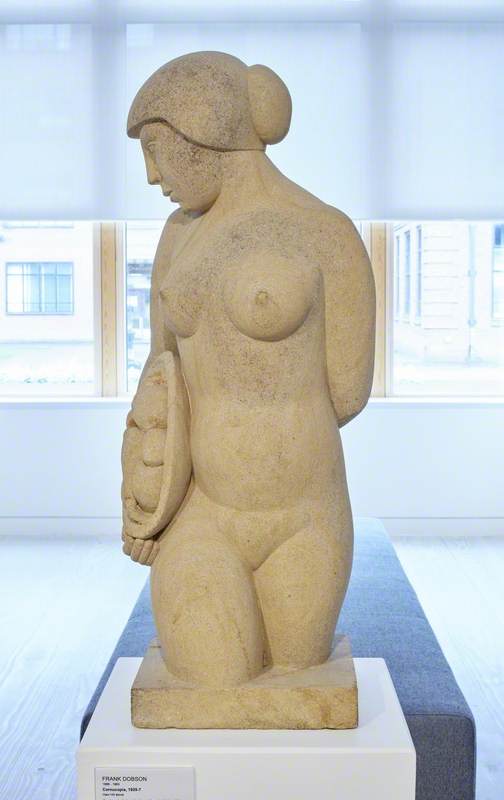 Frank Dobson (1886–1963)
Frank Dobson (1886–1963) -
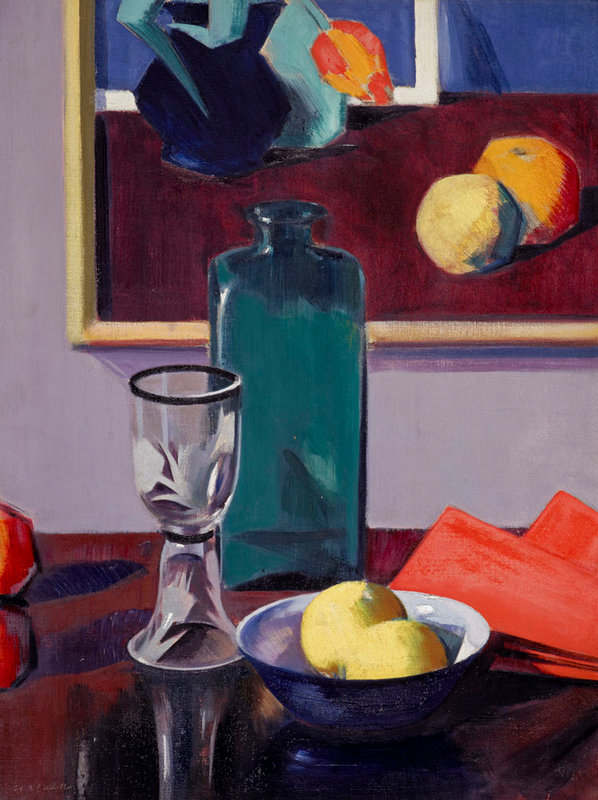 Francis Campbell Boileau Cadell (1883–1937)
Francis Campbell Boileau Cadell (1883–1937) -
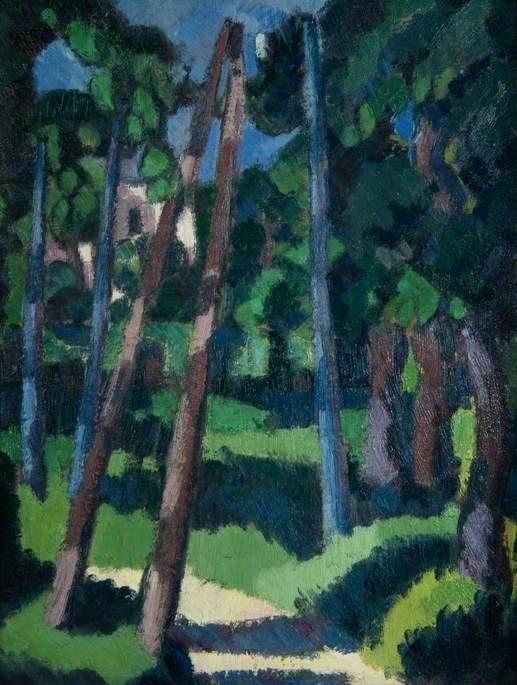 Margaret Morris (1891–1980)
Margaret Morris (1891–1980) -
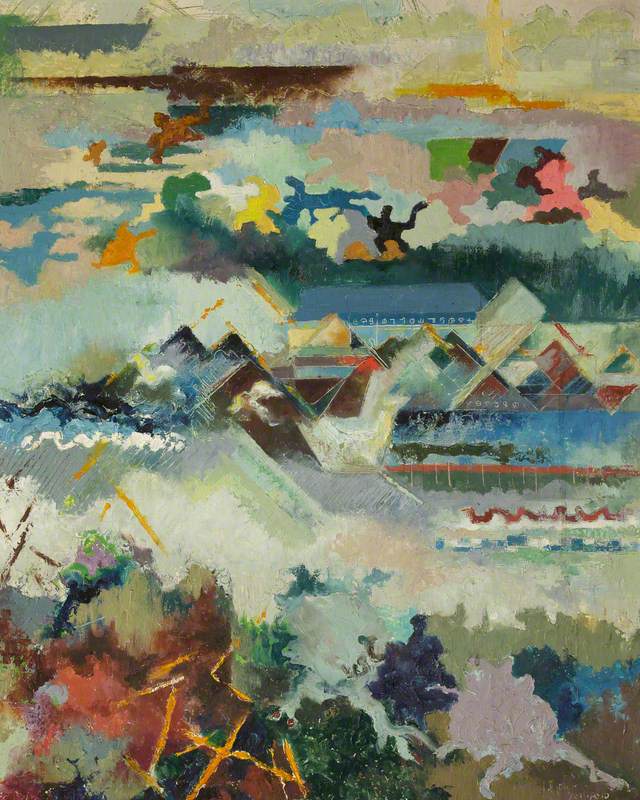 Louise Gibson Annand (1915–2012)
Louise Gibson Annand (1915–2012) -
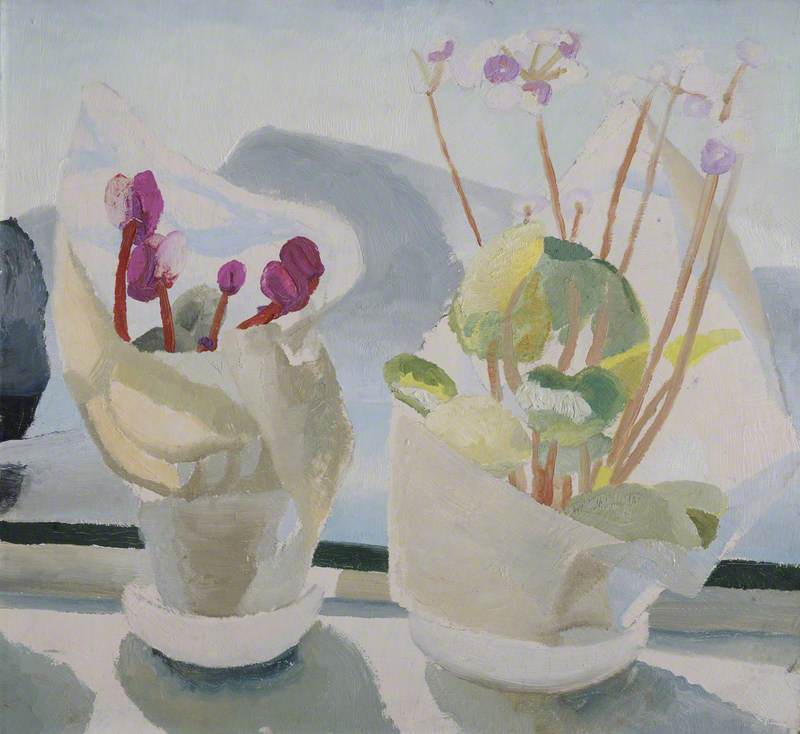 Winifred Nicholson (1893–1981)
Winifred Nicholson (1893–1981) -
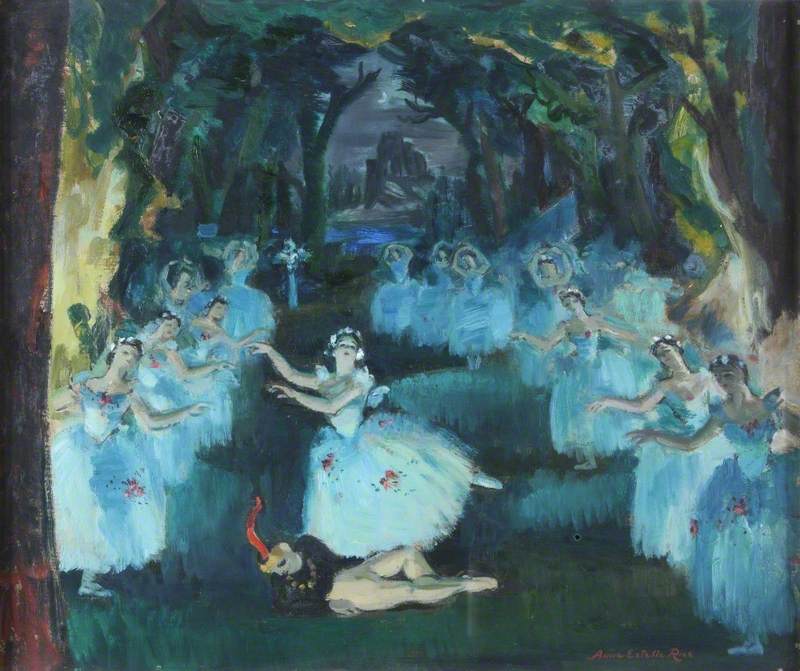 Anne Estelle Rice (1877–1959)
Anne Estelle Rice (1877–1959) -
 Wyndham Lewis (1882–1957)
Wyndham Lewis (1882–1957) -
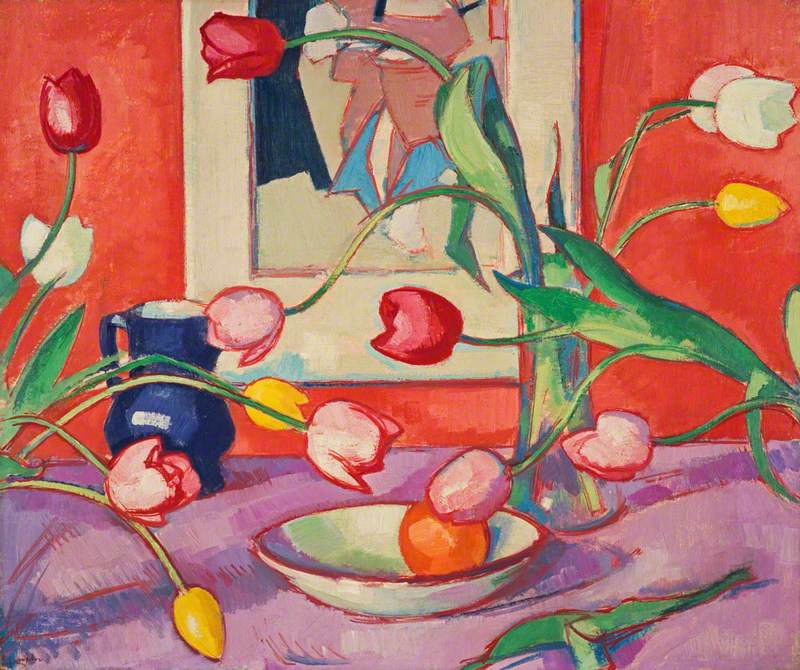 Samuel John Peploe (1871–1935)
Samuel John Peploe (1871–1935) -
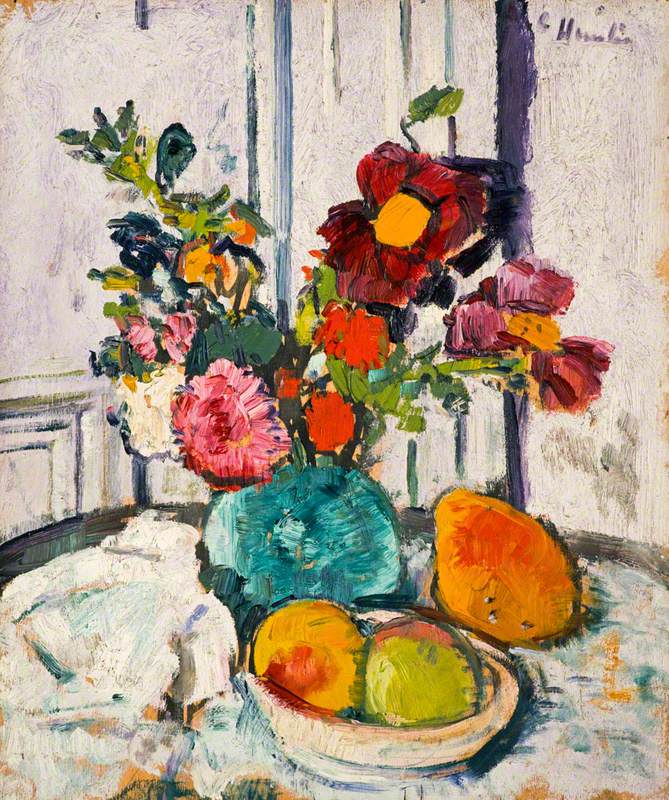 George Leslie Hunter (1877–1931)
George Leslie Hunter (1877–1931)
